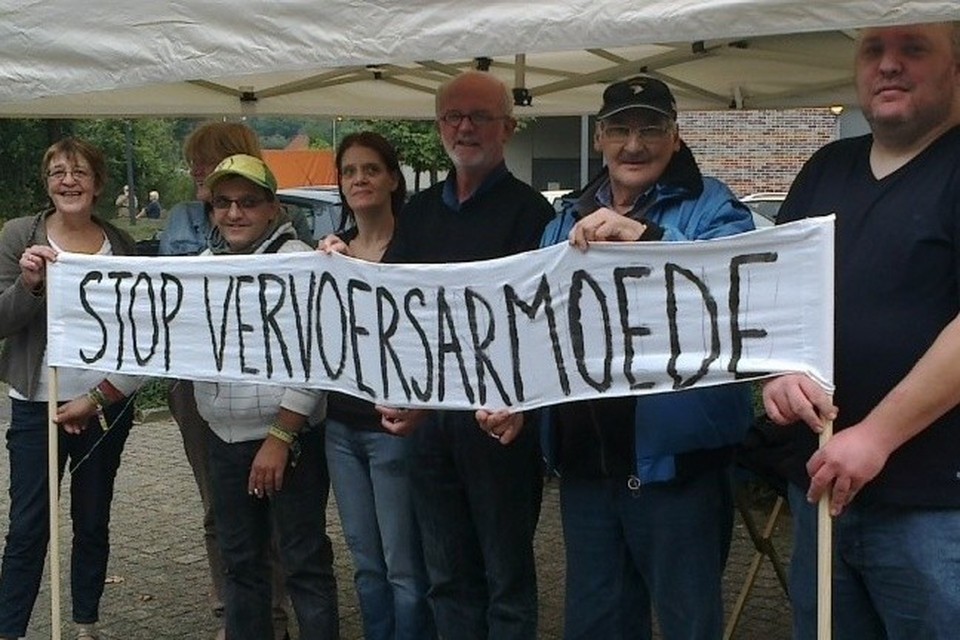Mobility / Mobility management / Public transport
The elements of the Mobility Donut: Mobility Poverty

How can mobility experts change their approach to help ‘Stop vervoersarmoede’ (transport – or mobility – poverty)?
I once worked for a public transport company where we had the pleasure of working on a wonderful project. The roads around a provincial town were under threat of increasingly busy traffic, and it was decided that motorists needed to be persuaded to take the bus instead. The government had provided an attractive budget, and with that we developed five new bus routes connecting residential areas in the surrounding countryside directly to workplaces in the city. Sophisticated routes and timetables, beautiful, luxurious new buses and a state-of-the-art marketing campaign were developed to entice motorists to leave the car at home. And yes, we did get new passengers! Not a lot, but many did leave their cars (and a few bicycles) and opted for bus travel instead.
However, we were dismayed to find how critical these passengers were. A bus driver who didn’t smile, one who took a turn too quickly, a minute’s delay… Despite all our investments and efforts, it never seemed good enough. Our target group – prosperous, healthy employees with a house and a car – ended up not appreciating the new service that was offered to them in the way we had hoped.
At the same time, we had a small trial with a ‘service bus’; an innovative small bus with a low floor – quite special at the time – that followed a route in the village catering specifically to the elderly. The route connected care homes, seniors’ residences, health centres and the Hema (the national household goods, clothing and food retailer). It wasn’t fast, and took a winding path through the village, but the drivers also helped passengers where necessary.
I rode along with the service bus on one of the first journeys and witnessed many elderly citizens getting on with tears in their eyes. For some who had not been out of the house in a year, that something so beautiful was arranged for them brought up some very emotional responses. Some passengers didn’t really need to go anywhere, but making the round trip while talking to the driver and the other passengers was a delight in and of itself. By offering them access to transport gave them the opportunity to participate in society again. The transition from ‘mobility poverty’ and ‘mobility happiness’ was realised with a simple bus ride.
Unfortunately, the trial ended after a few weeks and these service buses never really took off in the Netherlands. When measured against public transport standards, they were too slow, too expensive and had a too low ‘cost coverage ratio’. However, the experiences left me with some nagging questions: Was I investing my time and energy in the right things? And are we in the mobility world addressing the right ‘problems’?
Now, many years later, these questions are still relevant. Accessibility and traffic flow are still much more prominent on the agenda than mobility issues. And so, as a society, we spend a lot of time, energy and money making mobility choices easier for people who are already well off. While municipalities have to turn over the last dime in order to finance transport for the elderly, billions flow in to dubious projects such as the widening of motorways.
Fortunately, though, I am seeing changes to that mentality. Mobility poverty is getting increased attention, especially within Mobycon, where we approach the topic from different angles and for a variety clients. We are also looking for new assessment frameworks, particularly in the form of the Mobility Donut. Using a set of minimum and maximum standards and guidances, the Mobility Donut helps identify that when basic mobility is not offered, transport poverty arises, and what the consequences of that state are. Conversely, it also shows that we can lose ourselves in excessive mobility – like providing too many choices for those already with access – and the negative consequences that can have for the climate, people and the quality of the environment.
With this tool, we are helping to give our clients a push in the right direction towards a ‘mobility happy’ society, and to find a better balance of which concerns we should be focused on when it comes to mobility.
This blog is part of a series of four entries focused on the Mobility Donut. Each week, we will explain an element as experienced through our work and the mobility experience in the Netherlands. We developed this concept based on the ideas presented in Doughnut Economics, created by economist Kate Raworth. The Mobility Donut links mobility poverty, basic mobility, mobility happiness and excessive mobility. We are currently developing the Mobility Donut Game to help our clients find the balance in mobility policy. Interested? Please contact Babet Hendriks.


 ">
">